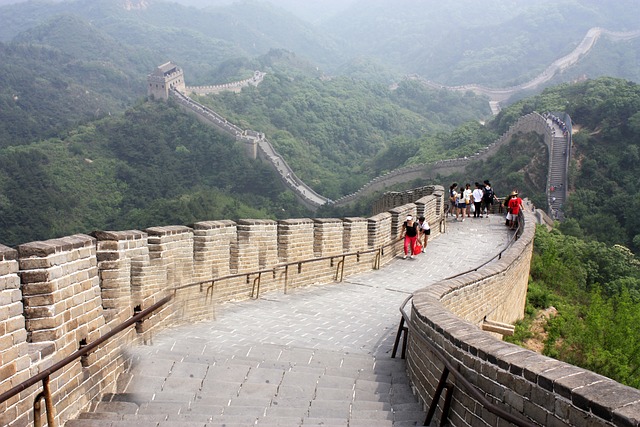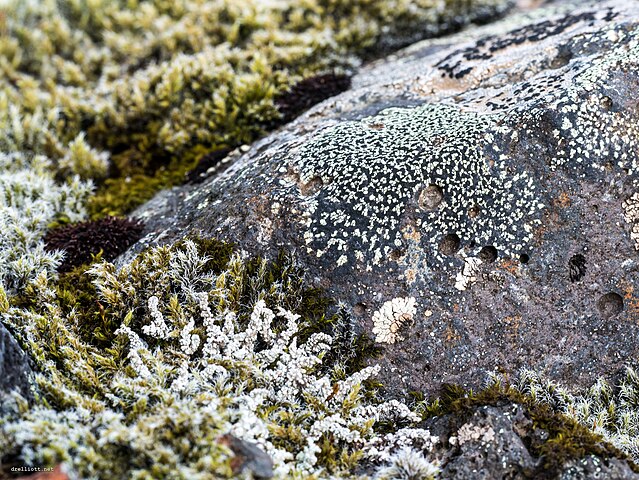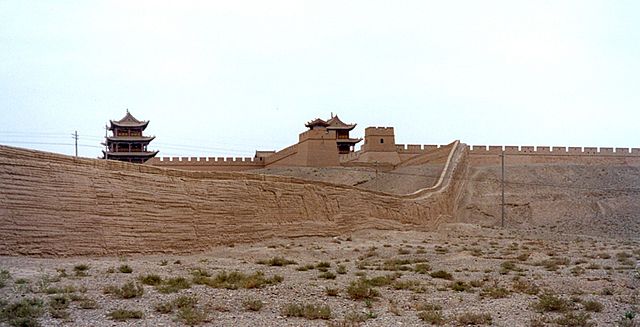 Did you know that it took more than 2000 years to finish the construction of the Great Wall of China?
Did you know that it took more than 2000 years to finish the construction of the Great Wall of China?
The Wall, sections of which were built over many different Chinese dynasties and ages, served to protect China from nomadic invaders from the north. Spanning over 20,000 kilometers, it is the world’s largest military structure!
Interestingly, since it was built during different periods, the various sections of the wall are made of different materials. The most well-known sections are made out of stone or brick, but the wall also has sections of rammed earth, which are just natural materials compacted with soil.
Even though many consider the rammed earth sections of the wall to be weaker, they actually have a very noteworthy benefit that the other sections lack: biocrusts.
What are Biocrusts?
 Biocrusts are layers of natural organisms such as cyanobacteria, algae, moss, fungi, and lichen. They lie on the surface of the soil and serve as an extra layer of protection from natural forces such as wind and rain erosion, as well as from soil degradation within the Great Wall itself.
Biocrusts are layers of natural organisms such as cyanobacteria, algae, moss, fungi, and lichen. They lie on the surface of the soil and serve as an extra layer of protection from natural forces such as wind and rain erosion, as well as from soil degradation within the Great Wall itself.
However, researchers have found that the areas of the rammed earth with biocrusts were up to three times stronger than the bare rammed earth!
The sections with biocrust were also discovered to be up to 48% less porous, which means that they allowed significantly less water into the wall, preventing water erosion. Out of all the different biocrusts, moss biocrusts turned out to be the strongest.
However, as global temperatures continue to rise due to climate change, many biocrusts may disappear. In the case of moss biocrusts, they might deteriorate to weaker crusts which could threaten the structure of the Great Wall of China.
The Future of the Great Wall
The Great Wall of China is very important to the history and culture of China, and it is even considered one of the Seven Wonders of the World and a UNESCO World Heritage site. Hence, it is crucial to protect it from erosion from natural forces, as well as the potential effects of rising global temperatures.
 Surprisingly, the popular opinion used to be that biocrusts were bad for the Great Wall and other historical structures, which led to many people removing them.
Surprisingly, the popular opinion used to be that biocrusts were bad for the Great Wall and other historical structures, which led to many people removing them.
New research may prove otherwise. Labs around the world are working to spur the regrowth of biocrusts in an attempt to restore damaged crusts and spread their growth to more areas of the wall. However, historical site conservationists remain divided over whether or not to use biocrusts to better preserve the Great Wall of China.
Though there is some concern over the effects of climate change on biocrusts, scientists hope they will survive due to their ability to modify their internal processes, which makes it easier for them to endure extreme environmental changes. This characteristic makes biocrust a good candidate for natural interventions aimed at preserving delicate structures.
As this research continues to develop, perhaps the field of historical conservation can turn more towards natural solutions such as biocrusts, and maybe this can translate over to other fields as well!
Sources: Science, World Atlas, CNN, UNESCO






